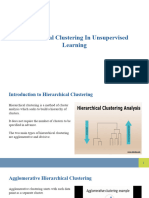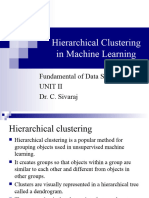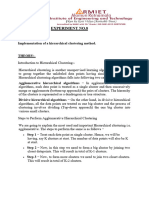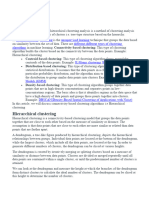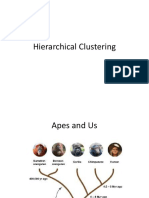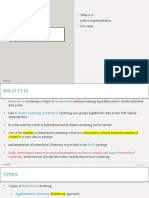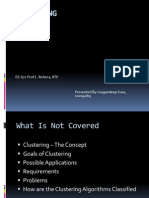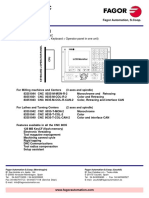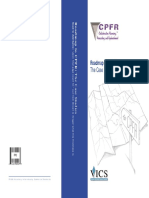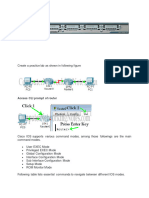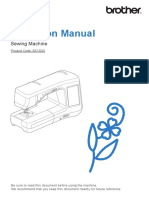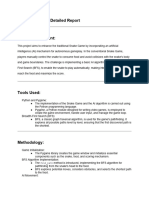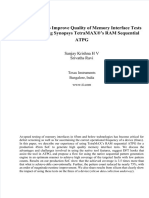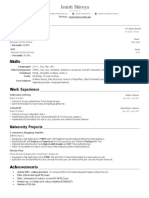0% found this document useful (0 votes)
19 views21 pagesHierarchical Clustering
Hierarchical clustering is an unsupervised machine learning technique that groups data points into clusters based on similarity, creating a dendrogram to visualize relationships. It has two main types: Agglomerative Hierarchical Clustering (bottom-up) and Divisive Hierarchical Clustering (top-down), with AHC being more commonly used. While it offers advantages like not needing predefined clusters and better handling of non-convex shapes, it is computationally expensive and sensitive to noise.
Uploaded by
ambatiachuth53Copyright
© © All Rights Reserved
We take content rights seriously. If you suspect this is your content, claim it here.
Available Formats
Download as PDF, TXT or read online on Scribd
0% found this document useful (0 votes)
19 views21 pagesHierarchical Clustering
Hierarchical clustering is an unsupervised machine learning technique that groups data points into clusters based on similarity, creating a dendrogram to visualize relationships. It has two main types: Agglomerative Hierarchical Clustering (bottom-up) and Divisive Hierarchical Clustering (top-down), with AHC being more commonly used. While it offers advantages like not needing predefined clusters and better handling of non-convex shapes, it is computationally expensive and sensitive to noise.
Uploaded by
ambatiachuth53Copyright
© © All Rights Reserved
We take content rights seriously. If you suspect this is your content, claim it here.
Available Formats
Download as PDF, TXT or read online on Scribd
/ 21


